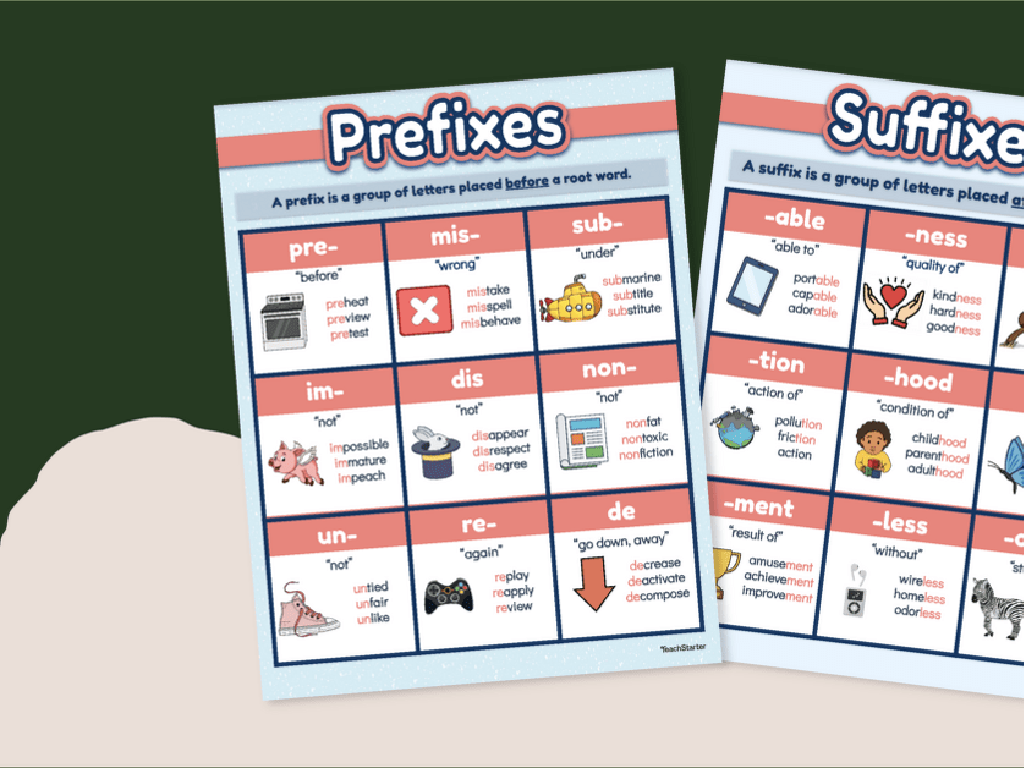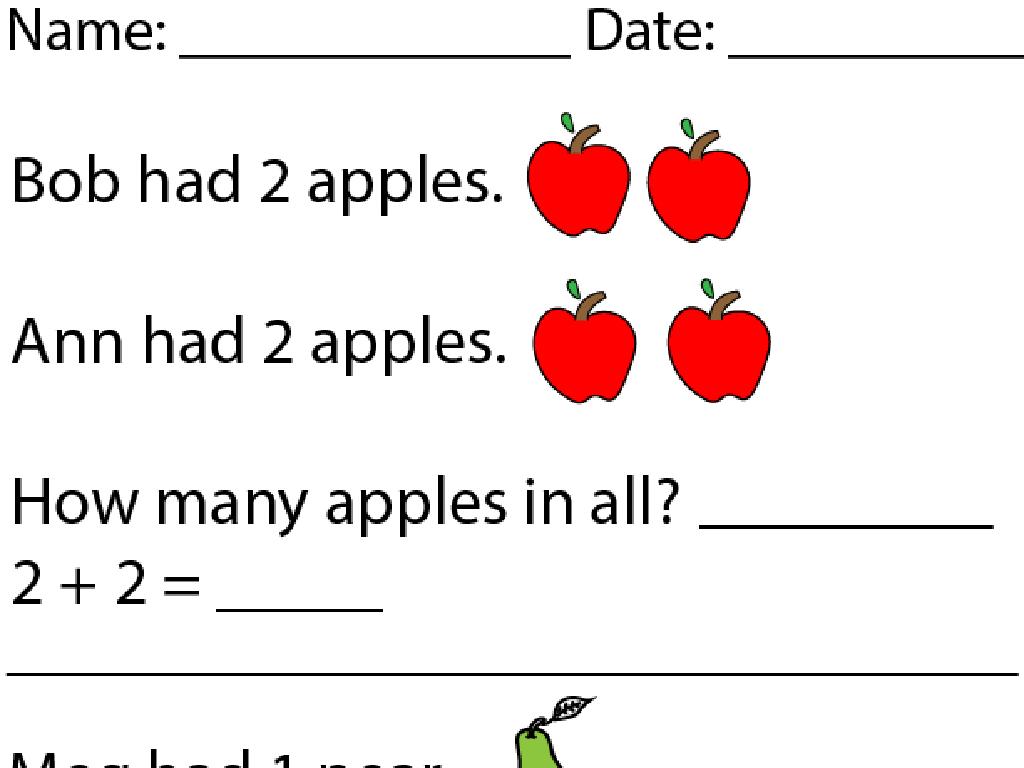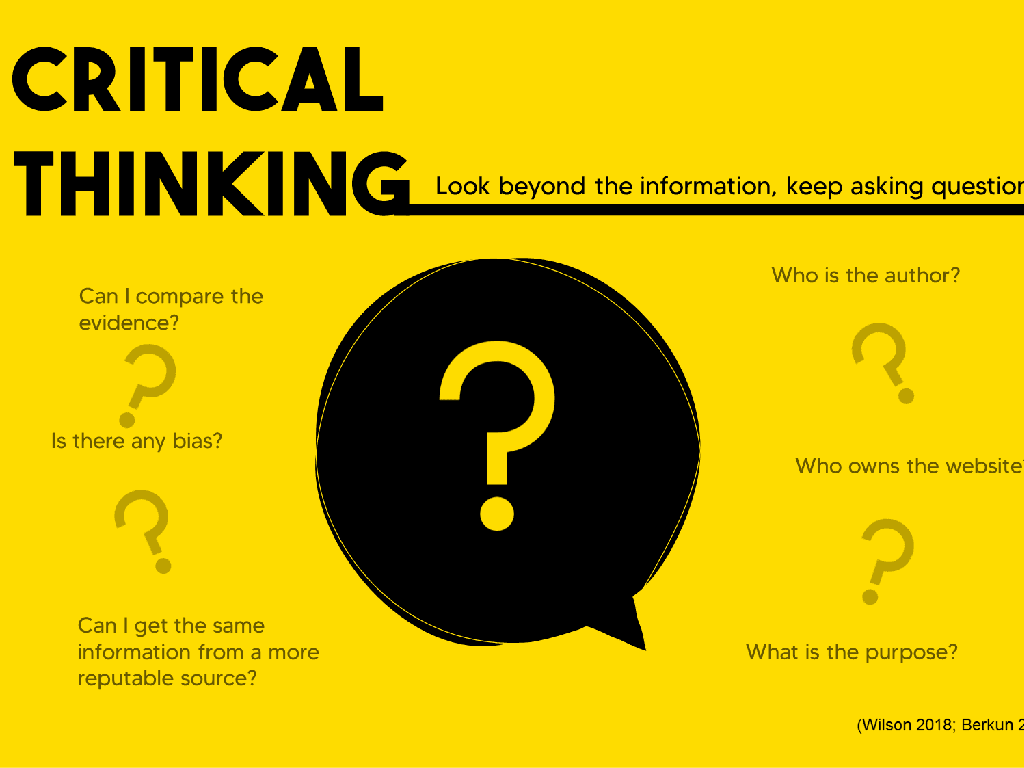Writing Numbers Up To 1,000 In Words - Convert Words To Digits
Subject: Math
Grade: Second grade
Topic: Names Of Numbers
Summary: This engaging second grade math presentation teaches students how to write numbers up to 1,000 in words and convert them back to digits. Through interactive activities, place value breakdowns, practice worksheets, Bingo games, and scavenger hunts, students strengthen their understanding of hundreds, tens, and ones. The lesson emphasizes real-world applications and encourages ongoing practice, creating a solid foundation for future math success and boosting number sense and confidence.
Please LOG IN to download the presentation. Access is available to registered users only.
View More Content
Welcome to Numbers: Big Numbers Up to 1,000
– Learning about numbers to 1,000
– Writing numbers as words
– Convert 453 into words: four hundred fifty-three
– Reading words as numbers
– Convert ‘seven hundred twenty-one’ into digits: 721
– Practice with examples
– Use examples like 312 as ‘three hundred twelve’
|
This slide introduces second-grade students to the concept of larger numbers, extending up to 1,000. The goal is to help them understand the structure and pattern of numbers when written in word form. Start by explaining the place value system, with hundreds, tens, and ones. Then, demonstrate how to write numbers in words, breaking them down into digestible parts. For reading numbers, show how to translate the written words back into digits. Provide plenty of examples and encourage students to practice by writing and reading numbers in both formats. This foundational skill will aid them in math and in everyday situations where they need to interpret numbers written in words.
Numbers All Around Us
– Numbers are everywhere
– They help us count and measure
– Counting examples: people, toys, stars
– How many friends? How many blocks?
– Practice: Writing numbers in words
– Convert ‘one hundred twenty-three’ to 123
|
This slide introduces the concept that numbers are a fundamental part of our daily lives, used for counting and measuring things around us. Encourage students to think about where they see numbers at home, in school, or outside. Provide relatable examples such as counting people in a game, toys in their room, or stars in the sky. Emphasize the importance of being able to write numbers in words, as it’s a skill they’ll use often. For homework, ask students to practice by writing numbers up to 1,000 in words and converting written numbers back to digits. This will help reinforce their understanding and recognition of numbers in different forms.
Numbers Up to 100: Words to Digits
– Review numbers 1-100
– Write numbers in words
– Numbers like ‘eighty-two’ are written as 82
– Convert words to digits
– ‘Twenty-four’ is written as 24
– Practice with examples
– Example: How do we write ‘thirty-three’ in digits?
|
Begin with a quick recap of numbers up to 100 to ensure students are familiar with the sequence. Move on to writing these numbers in word form, emphasizing the hyphen used between tens and ones. Introduce the concept of converting words to digits, using ‘twenty-four’ as an example. For practice, ask students to convert various numbers from words to digits, reinforcing the lesson with hands-on activities. Provide additional examples like ‘sixty-seven’ or ‘forty-one’ for students to work on, and encourage peer discussion to solidify understanding.
Understanding the Hundreds Place
– Meaning of hundreds place
– It’s the third digit from the right in a number
– Counting by hundreds to 1,000
– Practice: 100, 200, 300, … to 1,000
– ‘Three hundred’ equals 300
– Example: 300 is 3 groups of 100
|
This slide is aimed at helping second-grade students understand the concept of the hundreds place in a three-digit number. Begin by explaining that the hundreds place is the third digit from the right when writing numbers. It represents how many sets of one hundred are in a number. Use visual aids like blocks or counters to show groups of 100. Then, practice counting by hundreds with the class, starting from 100 and going up to 1,000. Use the example ‘three hundred’ to show that it means three groups of one hundred, which is written as 300. Encourage students to think of the hundreds place as a way to count large quantities easily and to recognize patterns in numbers.
Writing Numbers up to 1,000
– Writing numbers 101 to 1,000
– Combine hundreds, tens, and ones
– Hundreds place, then tens, then ones
– Example: ‘Four hundred thirty-two’
– ‘Four hundred thirty-two’ becomes 432
– Practice with different numbers
– Try ‘Two hundred fifty-one’ or ‘Seven hundred ninety’
|
This slide introduces the concept of writing numbers in word form up to 1,000. Start by explaining that numbers beyond 100 are written by combining the words for hundreds, tens, and ones. Use the example ‘Four hundred thirty-two’ to show how each part of the number corresponds to a place value, which when combined, gives us the number in digits. Encourage students to practice with various numbers, reinforcing the concept of place value and the correct order of hundreds, tens, and ones. Provide additional examples and guide them through the process, ensuring they understand how to write any number within this range in words.
Let’s Practice: Words to Digits!
– Convert words to digits
– Example: ‘Seven hundred eighty-one’ is 781
– Understand how to write numbers like 781 from words
– Pair up for a worksheet activity
– Work with a classmate to complete the worksheet
– Share your answers with the class
– Discuss what you’ve learned with everyone
|
This slide is designed to engage students in a hands-on activity where they practice converting numbers written in word form into their digit form. Start by demonstrating with an example, showing how ‘Seven hundred eighty-one’ is written as 781. Then, have the students pair up to work on a practice worksheet that provides additional examples of numbers in word form to convert to digits. Encourage collaboration and discussion among the pairs. After completing the worksheet, bring the class together and have a few pairs share their answers and the strategies they used to determine the correct digits. This reinforces their learning and allows them to learn from each other.
Game Time: Number Bingo!
– Play Bingo with number words
– Listen to numbers said in words
– Find the matching digits on your card
– First to complete a row shouts ‘Bingo!’
|
This interactive game is designed to help second graders practice converting number words to digits. Prepare Bingo cards with numbers up to 1,000 in digit form before the class. During the game, call out numbers in word form (e.g., ‘two hundred fifty-four’) and have students locate the corresponding digits on their Bingo cards. The first student to complete a row (horizontal, vertical, or diagonal) and yell ‘Bingo!’ wins. To ensure all students remain engaged, consider having multiple rounds with different winners or small prizes. This activity reinforces number recognition and understanding of place value in a fun and engaging way.
Class Activity: Number Word Scavenger Hunt
– Find objects with numbers in class
– Write numbers as words
– If you find ’32’, write ‘thirty-two’
– Share your findings with the class
– Tell us the object and the number word
– Discuss what we learned
– What patterns did you notice in the words?
|
This activity is designed to help students recognize numbers in their environment and practice converting them into written words. Encourage the students to look for numbers on books, rulers, clocks, or charts. Once they find a number, they should write it down in its word form, reinforcing their understanding of the number-word correlation. After the hunt, students will share their findings, which helps with public speaking and confidence. Discuss as a class the patterns observed in writing numbers as words, such as the placement of hyphens and the use of ‘ty’ for tens. This activity caters to different learning styles and promotes active participation.
Wrapping Up: Numbers Up to 1,000
– Congratulations on learning numbers!
– Practice is key – continue at home
– Try writing random numbers in words daily
– Exciting next step: Adding big numbers
– We’ll use larger numbers for addition
– Keep up the great work!
|
Well done to all the students for their hard work in learning to write numbers up to 1,000 in words and convert words to digits. It’s important to keep practicing these skills at home to become more confident and proficient. Encourage students to write down numbers they see around them in words and to check their work by converting it back to digits. In the upcoming lessons, we will build on this foundation by learning how to add larger numbers, which is an exciting next step in their mathematical journey. Keep the enthusiasm high and acknowledge their progress so far!





